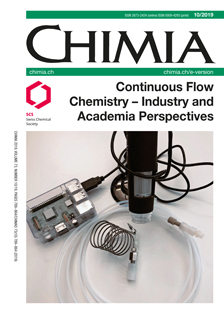Microplastics – from Anthropogenic to Natural
FH-HES Universities of Applied Sciences
DOI:
https://doi.org/10.2533/chimia.2019.841PMID:
31645250Keywords:
Biopolymers, Electrospinning, Microplastics, Nanoparticles, PolyhydroxyalkanoatesAbstract
In the context of the ongoing discussion of accumulating plastic debris in the environment, this article summarizes recent reports on the topic of microplastic pollution. Moreover, it gives an overview of the results from the activities of the research group for Biotechnology and Sustainable Chemistry of the Institute of Life Technologies at the HES-SO ValaisWallis concerning the fabrication of biodegradable microstructured plastics and microplastics from renewable resources. Polyhydroxyalkanoate biopolyesters are proposed as one suitable alternative in specific applications to reduce the use of persistent plastics. Standard techniques are described that have been successfully applied to produce porous materials, fibers and particles in the micro- and nanometer range.Downloads
Published
2019-10-30
Issue
Section
Columns, Conference Reports
Categories
License
Copyright (c) 2019 Swiss Chemical Society

This work is licensed under a Creative Commons Attribution-NonCommercial 4.0 International License.
How to Cite
[1]
N. Hanik, V. Amstutz, M. Zinn, Chimia 2019, 73, 841, DOI: 10.2533/chimia.2019.841.







